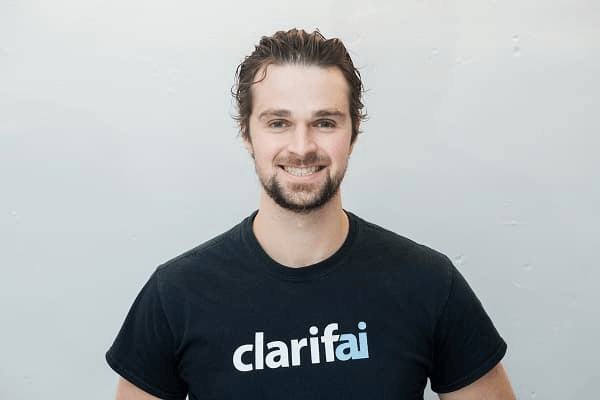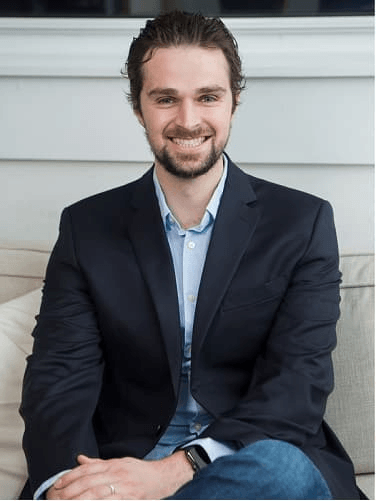
Administrator • 7yrs
How Matthew Zeiler Created 'Clarifai' - The Image And Video Recognition API For Building Smart Apps
Growing up in a farm town called Beausejour in Manitoba, Canada, Matthew Zeiler knew that he wanted to become an entrepreneur some day. His small town did not witness a tech scene or many large businesses, so it was television that inspired Matthew to see big things happen. With his father a doctor, mother a nurse and brother in med school, choosing his university program wasn't a tough decision for him. He went for Pre-Med, but soon realised that he was less excited about the biology/chemistry and was more into physics and calculus.
Since he was always fascinated about 'building things', he decided pursue engineering and got into University of Toronto Engineering Science. Matthew later went on to do a PhD in machine learning and image recognition and his research work produced the top 5 results in the 2013 ImageNet classification competition.
In November 2013, Matthew started 'Clarifai' - the world’s best published object recognition system that can be used for targeting ads to images, organizing user photo collections, and searching large untagged image collections.
In an exclusive interview with CrazyEngineers, we got Matthew to talk about how it all began, their first customer, the competition and a lot more. Read on!
Matthew Zeiler, Founder & CEO, Clarifai
CE: You did ‘Doctor Of philosophy Degree’ in Computer Science. We would love to know more about it.
Matthew Zeiler: Yes. During undergrad I had the chance to do my undergrad thesis with Geoff Hinton, one of the pioneers of neural networks who was a U of T professor. This taste of machine learning combined with my passion to start a business some day made me decide on doing a PhD in the first place, to learn more about machine learning in order to start a business in this field. I spent 4 years from 2009 to 2013 focused on applying neural networks to understanding images under the guidance of Rob Fergus and in the same lab as Yann LeCun.
CE: Tell us more about your first startup – ‘Review-Mate’. Where did you get the money to start your business?
Matthew Zeiler: I created Review-Mate after noticing a need for course specific review booklets. These were tailored to each course so contain all the material you need and nothing more. The textbooks are too much and the review sheets you can buy in a bookstore never align with the course curriculum. I leveraged my detailed notes to write the booklets and it didn’t require much money to start up. I wrote all the books myself and other than a small amount of printing costs for the initial booklets.

CE: Tell us the story of how Clarifai came to life. How many iterations took it from the initial idea to the current product?
Matthew Zeiler: Taking a brand new technology to market takes several iterations. It’s one thing to do research in AI - it’s a whole other thing to productize it and make it useful to customers. I started Clarifai at the end of 2013 and it took a little less than a year to launch v1 of our API.
CE: How did Clarifai use computer vision for gaining high-level understanding of digital images and videos?
Matthew Zeiler: Our computer models are trained on a list of possible outputs (concepts) to apply to any input (your content). Using machine learning, a process which enables a computer to learn from data examples and draw its own conclusions, our models are able to automatically predict the correct tags for any given image or video. These models are then made easily accessible through our simple API.
Each image is processed on a pixel by pixel basis through convolutional neural networks. These networks are composed of multiple layers that extract increasingly more complex representations from the image. The first layer may learn to recognize edges and colors, the second layer recognizes corners and curves, while many layers deep into the network the layer recognizes object parts and entire objects. This “deep” is what the phrase “deep learning” refers to.
CE: What are different services or products Clarifai offers in this domain? Tell us more about the pricing for them.
Matthew Zeiler: Clarifai has a generous free tier for its API and developer-friendly metered pricing, so you only ever pay for what you use. You can access many different types of visual recognition models through our API, or build your own through something called Custom Training. Our core model identifies 11,000+ general concepts like objects, ideas, and emotions. Depending on the level of specificity you need for your data, you may want to use our additional models. For example, our core model can tell you if something is "food" but you'll need our Food domain model to tell you what kind of food, like "pizza." Or, if you need certain specificity that is unique to your use case, like “Domino’s Pizza,” you’ll need to a custom model.
Our Custom Training product takes the process of teaching AI (which used to take thousands of data examples and lines of code, special infrastructure, and a team of data scientists) and makes it so simple anyone can teach AI new concepts in a matter of seconds.
CE: How did you get your first customer? How did you make your first deal?
Matthew Zeiler: Your personal network is really important for getting your first customers because as a new company, you have to build trust. We’re lucky to have great early investors who were able to introduce us to people as the first step of trust and once we were able to show it, our technology spoke for itself.
We were also fortunate to win an international competition called Imagenet at the end of 2013 just weeks after incorporating the company. This triggered inbound interest from press, investors and customers!
CE: Do you believe that Clarifai is unique in comparison to its competitors?
Matthew Zeiler: Clarifai has a big advantage being out early in the AI space and working on real world problems with our customers. Clarifai offers AI tools to developers that no other company has and in doing so, we’ve really been able to make AI accessible to everyone. Custom Training is one example where we made the process of teaching AI orders of magnitude faster and easier so that anyone can do it. Another example is our feedback loop which allows customers to send us information that makes our AI smarter, so it’s constantly improving. We put the power of teaching AI into individual’s hands because we believe that’s the only way to build unbiased and truly “smart” technology.
CE: If you could start over, what would you do differently in starting and/or running your startup?
Matthew Zeiler: I think at this point not much would change. We continue to learn from mistakes we make along the way.
CE: Thanks for your time. Any message for budding entrepreneurs?
Matthew Zeiler: I would say to anyone thinking about starting a business that you have to be really passionate about what you do. There will be ups and downs along the way, and as CEO you will begin to do things far beyond the original thing you started building. So your passion for solving the problem and wanting to build a business will keep you scaling!
